Earlier this week, Shueisha and MediBang launched MANGA Plus Creators, a platform for English and Spanish-speaking artists to publish their own original manga. Anyone who uploads their work to the platform is automatically entered in a contest that comes with a cash prize and distribution through the MANGA Plus and Shonen Jump+ apps. (The site will use likes, favorites, and total views to determine the winners of each month’s contest, as well as input from Shueisha’s editorial staff.) While that sounds like a good deal, artists should read the fine print before submitting their work; the artist retains basic intellectual property rights to their creation, but must allow MediBang and Shueisha “to use the contents the User submitted and published on the Service, MANGA Plus Creators by SHUEISHA for free with the purpose of advertising and promoting the Service, the Related website, and the Related service.” Caveat emptor!
FEATURES AND PODCASTS
Comics scholar Paul Gravett just posted a thoughtful list of twenty-six art books and graphic novels slated for a November 2022 release, among them They Were Eleven, Synasthesia: The Art of Aya Takano, and The Boxer. [Paul Gravett: The Blog at the Crossroads]
Alicia Haddick files a report from the Sailor Moon 30th Anniversary exhibition, now on display at the Sony Music Roppongi Museum in Tokyo. The show runs through the end of 2022. [Crunchyroll]
Speaking of exhibitions, Tokyo’s Seibu department store announced that it will be sponsoring a 40th anniversary celebration of Shuichi Shigeno’s professional debut. The show will feature artwork from Bari Bari Densetsu, MF Ghost, and, of course, Initial D. [Otaku USA]
Megan D. highlights some problematic imagery on the cover of Tokyopop’s Peremoha: Victory for Ukraine anthology. [Twitter]
And speaking of Tokyopop, the publisher is actively participating in the Soar with Reading Initiative, an organization that “provides free books to children to address the issue of ‘book deserts,’ areas with limited access to age-appropriate books.” [ICv2]
If you’re in the mood for love, Honey’s Anime has a helpful list of ten great romance manga. [Honey’s Anime]
Kawaii alert: the Mangasplainers dedicate their latest episode to Konami Kanata’s Chi’s Sweet Home. [Mangasplaining]
Helen Chazan posts a thoughtful meditation on Kazuo Umezz‘s preoccupation with childhood trauma and abuse, as evident in The Drifting Classroom, The Cat-Eyed Boy, and Orochi. “This is Umezz’s interest: teasing out, for entertainment purposes, the dissonance between the idealized family and the actual resentments a child feels within their family,” she explains. “Mother is an ideal of nationhood, the soil from which you grew. Mother is also the woman who scolded you, humiliated you, controlled your existence from home while your father worked long hours. How can both stories be true?” [The Comics Journal]
Also worth a look: Caitlin Moore’s essay about My Brain is Different: Stories of ADHD and Other Developmental Disorders. Moore notes that author Monzusu “sought out the stories of ordinary people with experiences similar to her own, eventually turning some of them into a memoir manga. In doing so, she offered neurodivergent people like her a rare chance to tell their own stories in their own words, when most of the world would rather talk over us, and created a tool to help people understand people like us.” [Anime Feminist]
REVIEWS
Sean Gaffney and Michelle Smith weigh in on the latest installments of Frieren: Beyond Journey’s End, In/Spectre,and Knight of the Ice, while the crew at Beneath the Tangles offer a medley of short manga reviews.
New and Noteworthy
- Chalk-Art Manga: A Step-By-Step Guide (Harry, Honey’s Anime)
- Kimono Jihen, Vol. 1 (Rebecca Silverman, Anime News Network)
- A Nico-Colored Canvas, Vol. 1 (Rebecca Silverman, Anime News Network)
- Princess Knight: Omnibus Edition (darkstorm, Anime UK News)
- A Returner’s Magic Should Be Special, Vol. 1 (Noemi10, Anime UK News)
- SINoAlice, Vol. 1 (Rebecca Silverman, Anime News Network)
- The Tunnel to Summer, The Exit of Goodbyes: Ultramarine, Vol. 1 (Renee Scott, Good Comics for Kids)
- Your Treacle Affects at Night (Rebecca Silverman, Anime News Network)
Complete and Ongoing Series
- Don’t Toy With Me, Miss Nagatoro, Vol. 11 (King Baby Duck, Boston Bastard Brigade)
- Excel Saga (Megan D., The Manga Test Drive)
- Kuishinbo (Krystallina, Daiyamanga)
- New York, New York, Vol. 2 (Sarah, Anime UK News)
- Otherside Picnic, Vol. 2 (Sandy F., Okazu)
- Sasaki and Miyano, Vol. 6 (Sarah, Anime UK News)
- The Splendid Work of a Monster Maid, Vol. 3 (Demelza, Anime UK News)
- Yuri Is My Job!, Vol. 9 (Erica Friedman, Okazu)
 Attention manga shoppers!
Attention manga shoppers! 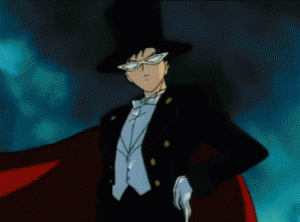
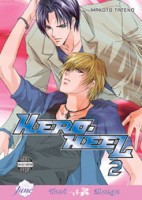
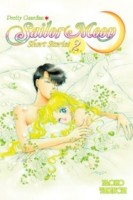
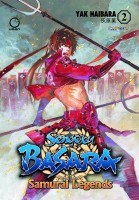
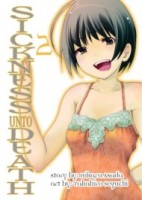

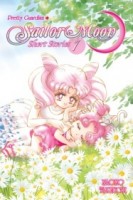
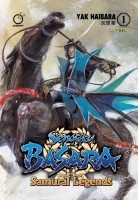
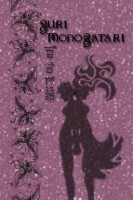

 SEAN: As always, I sort of give away what I’m picking in my
SEAN: As always, I sort of give away what I’m picking in my  MJ: With the slew of Yen Press titles on
MJ: With the slew of Yen Press titles on 
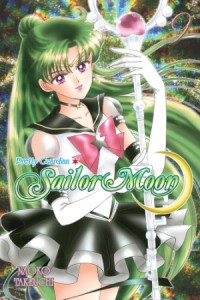
 MICHELLE: Some very enjoyable things! First up is the third volume of
MICHELLE: Some very enjoyable things! First up is the third volume of  MJ: My first selection for the evening is a very different brand of shoujo than Sailor Moon, though also quite enjoyable. I’m speaking of the first volume of Miyoshi Tomori’s
MJ: My first selection for the evening is a very different brand of shoujo than Sailor Moon, though also quite enjoyable. I’m speaking of the first volume of Miyoshi Tomori’s  MICHELLE: Well, speaking of nuanced characters… I read volume two of
MICHELLE: Well, speaking of nuanced characters… I read volume two of  MJ: My second read this week is the perfect example of everything Wandering Son is not. That would be Hisaya Nakajo’s
MJ: My second read this week is the perfect example of everything Wandering Son is not. That would be Hisaya Nakajo’s  SEAN: Oh, definitely. I’ve always liked the manga better than the anime, even though I’ve enjoyed both immensely. And since I’ve been involved in the fandom since 1996 or so, I did not have any issues with Usagi’s characterization the way that some people have. Honestly, the re-read of Vol. 1 of both Moon and V just made me realize how much I wanted to read the rest.
SEAN: Oh, definitely. I’ve always liked the manga better than the anime, even though I’ve enjoyed both immensely. And since I’ve been involved in the fandom since 1996 or so, I did not have any issues with Usagi’s characterization the way that some people have. Honestly, the re-read of Vol. 1 of both Moon and V just made me realize how much I wanted to read the rest. MJ: So to switch gears a little, let’s talk about Sailor V. I read this first, and though I liked it quite a lot, I did get pretty weary of its string of similar villains, whose only purpose in villainy seemed to be making people their slaves. After a while, it almost seemed like a running joke. Is it just me?
MJ: So to switch gears a little, let’s talk about Sailor V. I read this first, and though I liked it quite a lot, I did get pretty weary of its string of similar villains, whose only purpose in villainy seemed to be making people their slaves. After a while, it almost seemed like a running joke. Is it just me?
 MICHELLE: While this week’s list over at Midtown Comics does include some real contenders—Bunny Drop and Goong especially—I simply must go off list this time and pick what has to be one of the most highly anticipated (if not the most, but we are in a situation where Princess Knight is also on its way!) releases of the year:
MICHELLE: While this week’s list over at Midtown Comics does include some real contenders—Bunny Drop and Goong especially—I simply must go off list this time and pick what has to be one of the most highly anticipated (if not the most, but we are in a situation where Princess Knight is also on its way!) releases of the year:  SEAN: Yes, while I really should be trying to drive up Hayate the Combat Butler’s sales by talking about how enjoyable this current serious arc is, it’s got to be Sailor Moon this week. Or rather, I’ll talk about
SEAN: Yes, while I really should be trying to drive up Hayate the Combat Butler’s sales by talking about how enjoyable this current serious arc is, it’s got to be Sailor Moon this week. Or rather, I’ll talk about  DAVID: For whatever incomprehensible reason, neither of the Sailor debuts will be showing up at my local comic shop, which would have been enough to plant a seed of dark bitterness in my heart, were it not for the fact that I can look forward to the fourth volume of Yumi Unita’s
DAVID: For whatever incomprehensible reason, neither of the Sailor debuts will be showing up at my local comic shop, which would have been enough to plant a seed of dark bitterness in my heart, were it not for the fact that I can look forward to the fourth volume of Yumi Unita’s  KATE: Since MJ is singing the praises of Sailor Moon, I’ll bang the drum for volume 12 of
KATE: Since MJ is singing the praises of Sailor Moon, I’ll bang the drum for volume 12 of  MJ: As most of our readers probably have heard, the
MJ: As most of our readers probably have heard, the